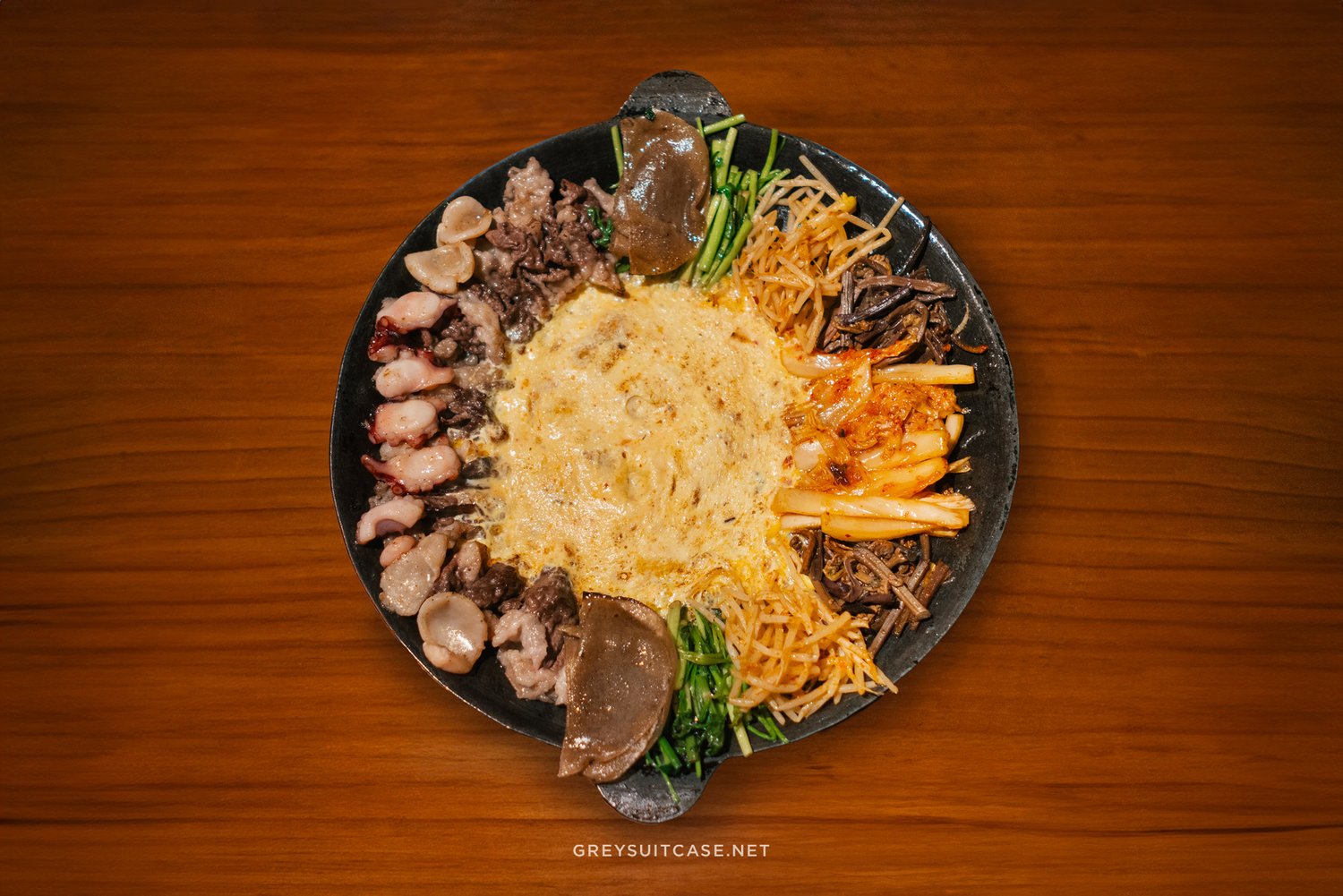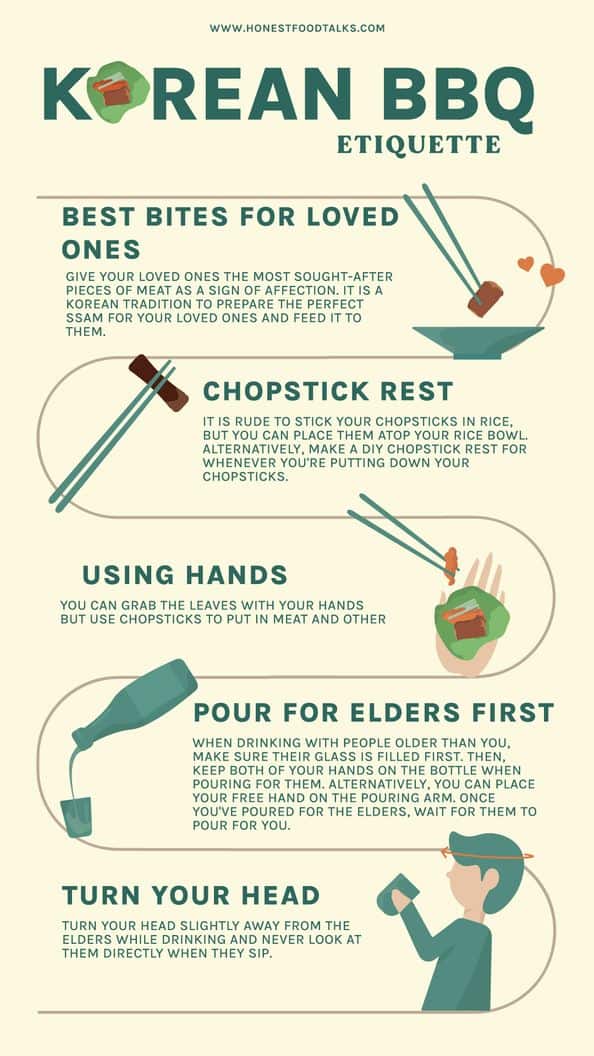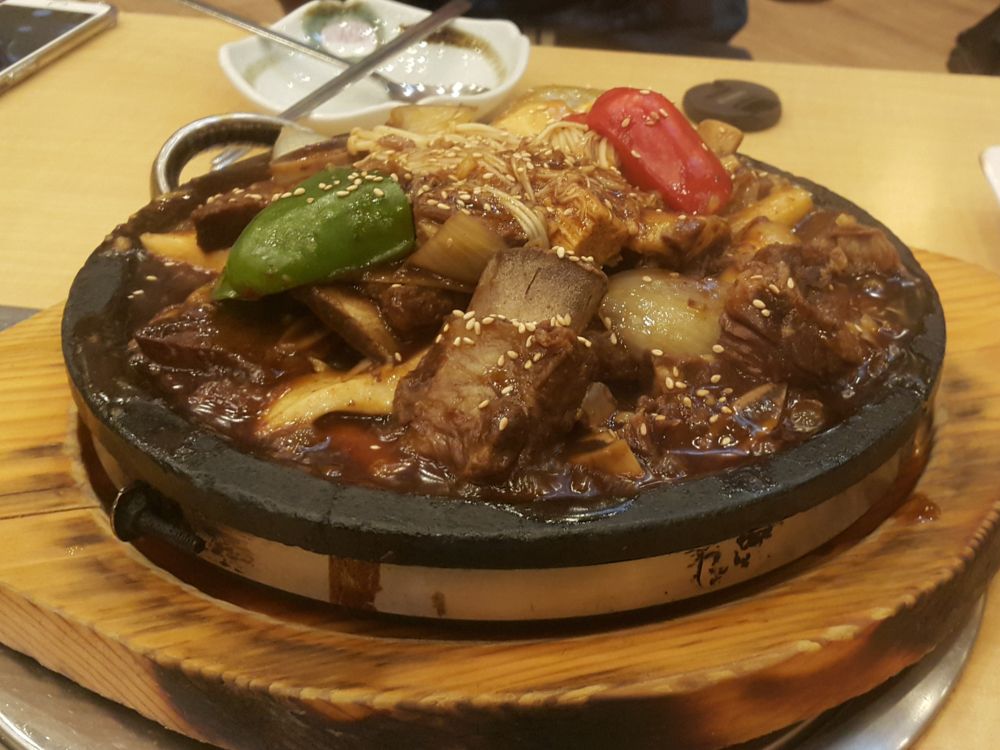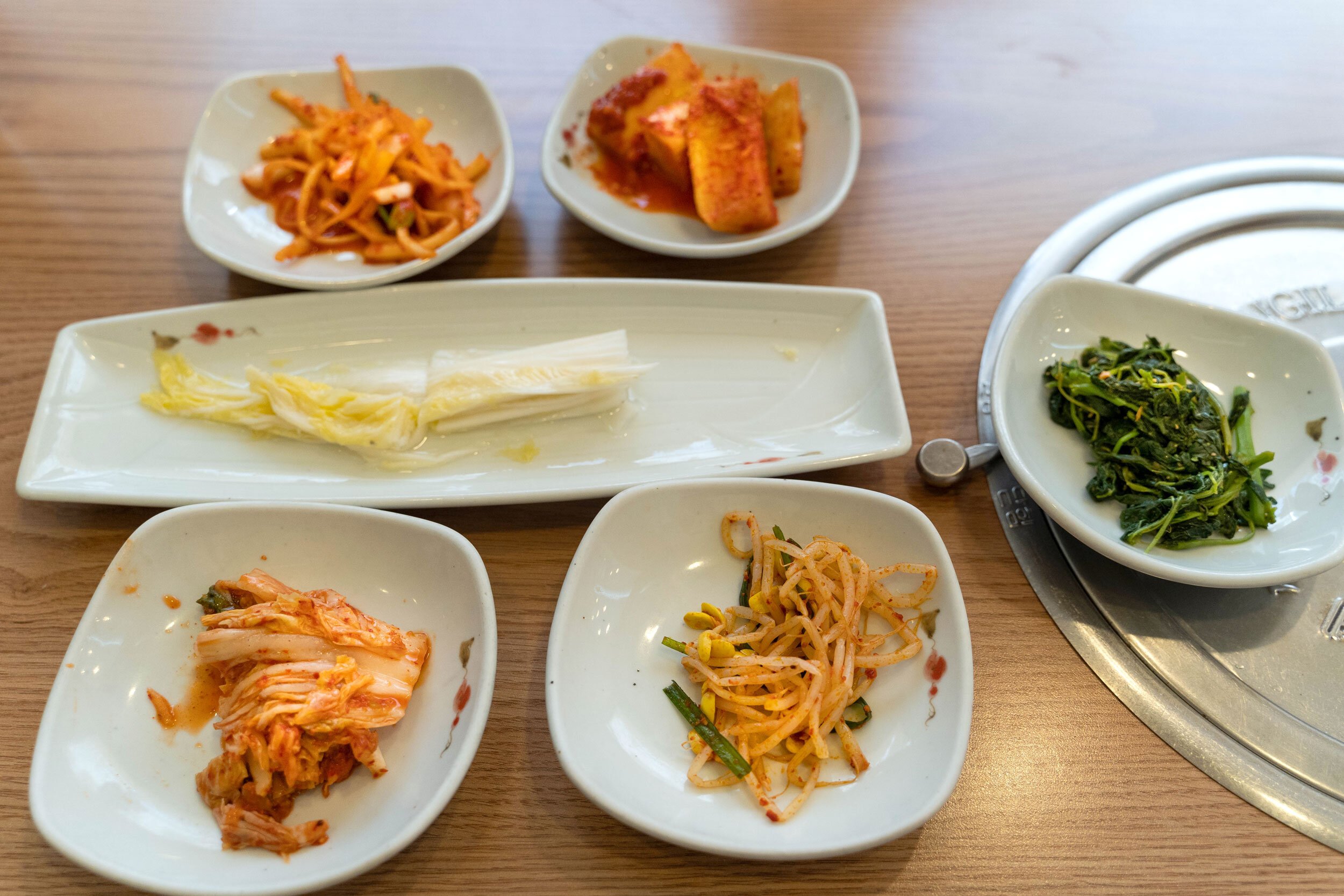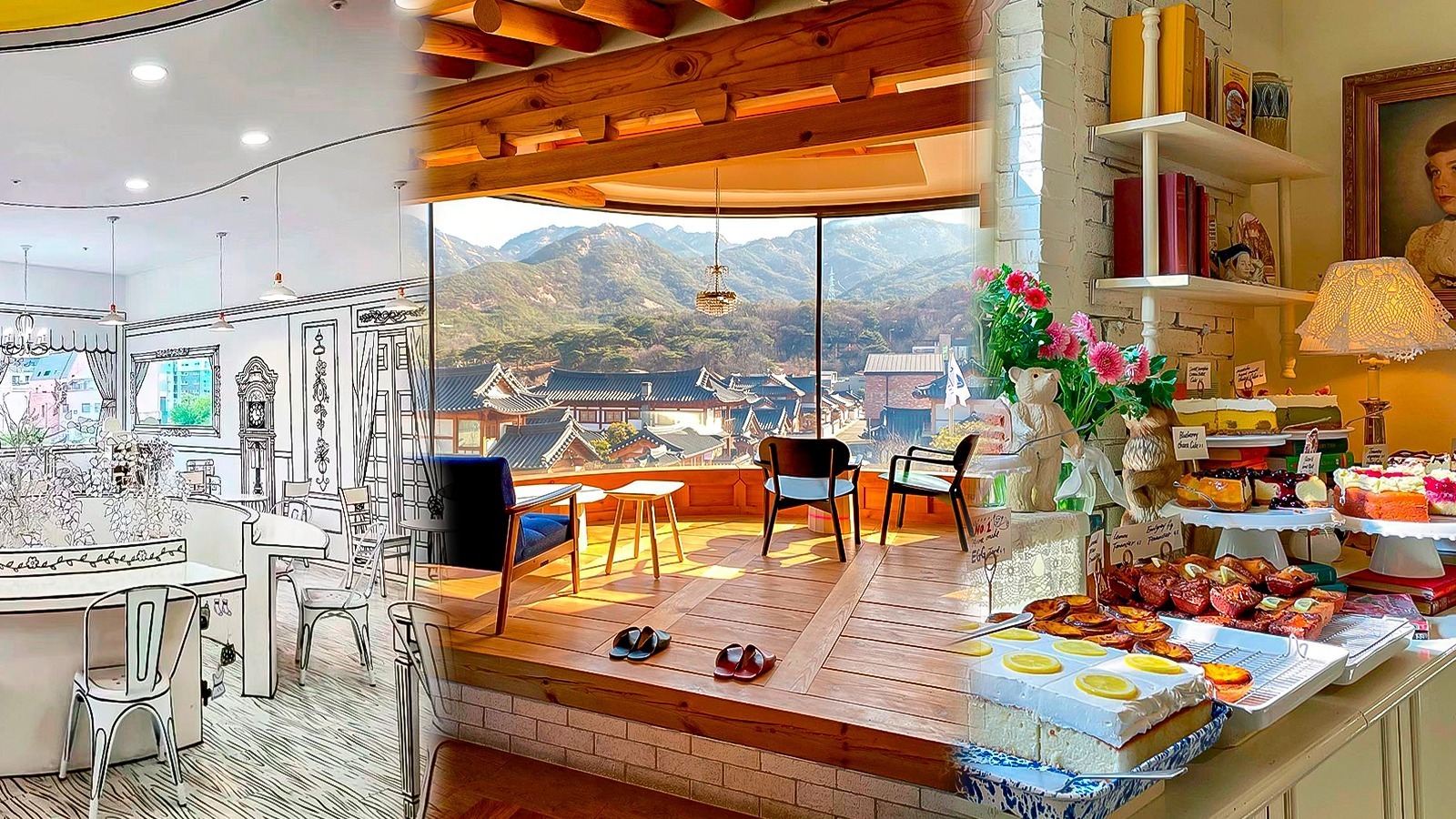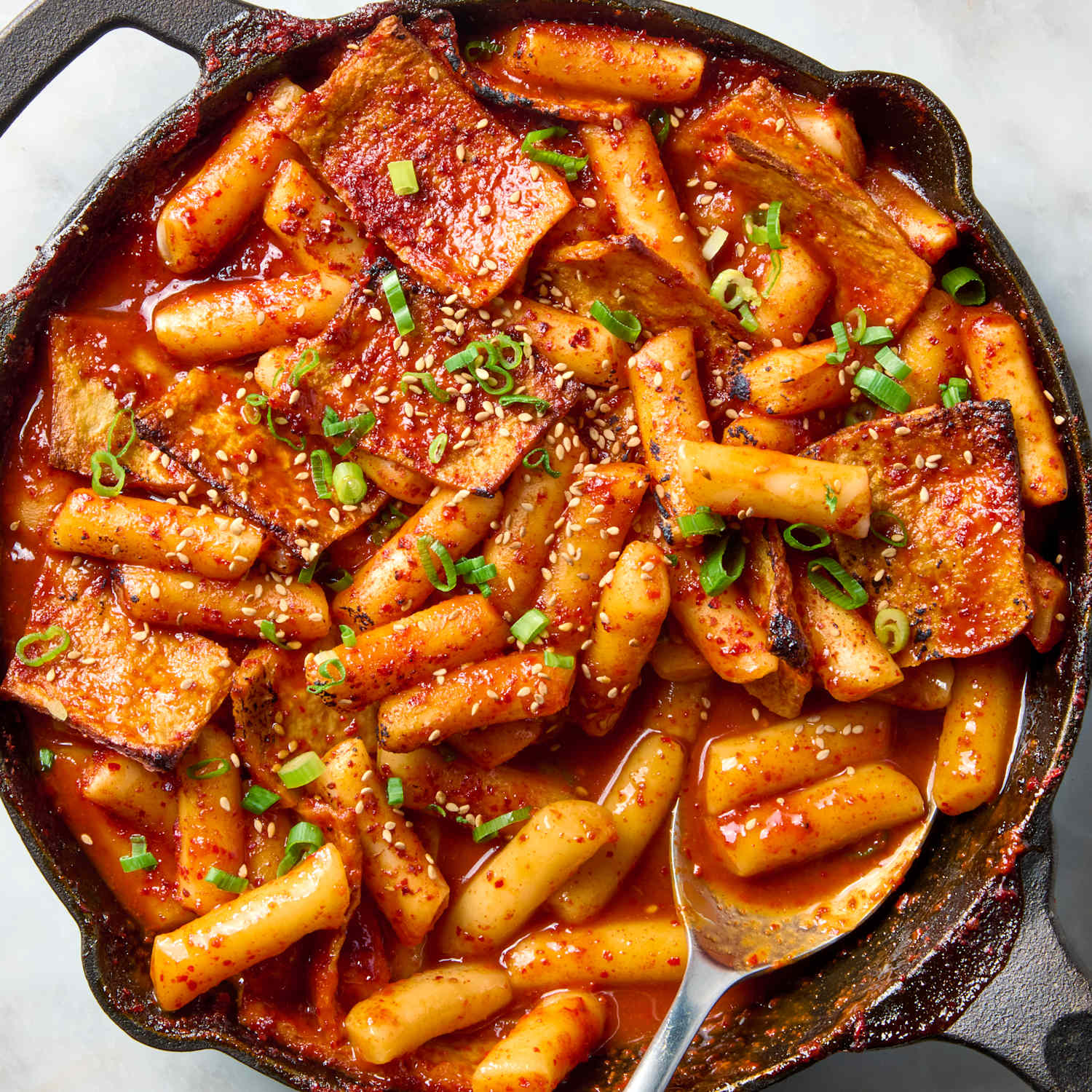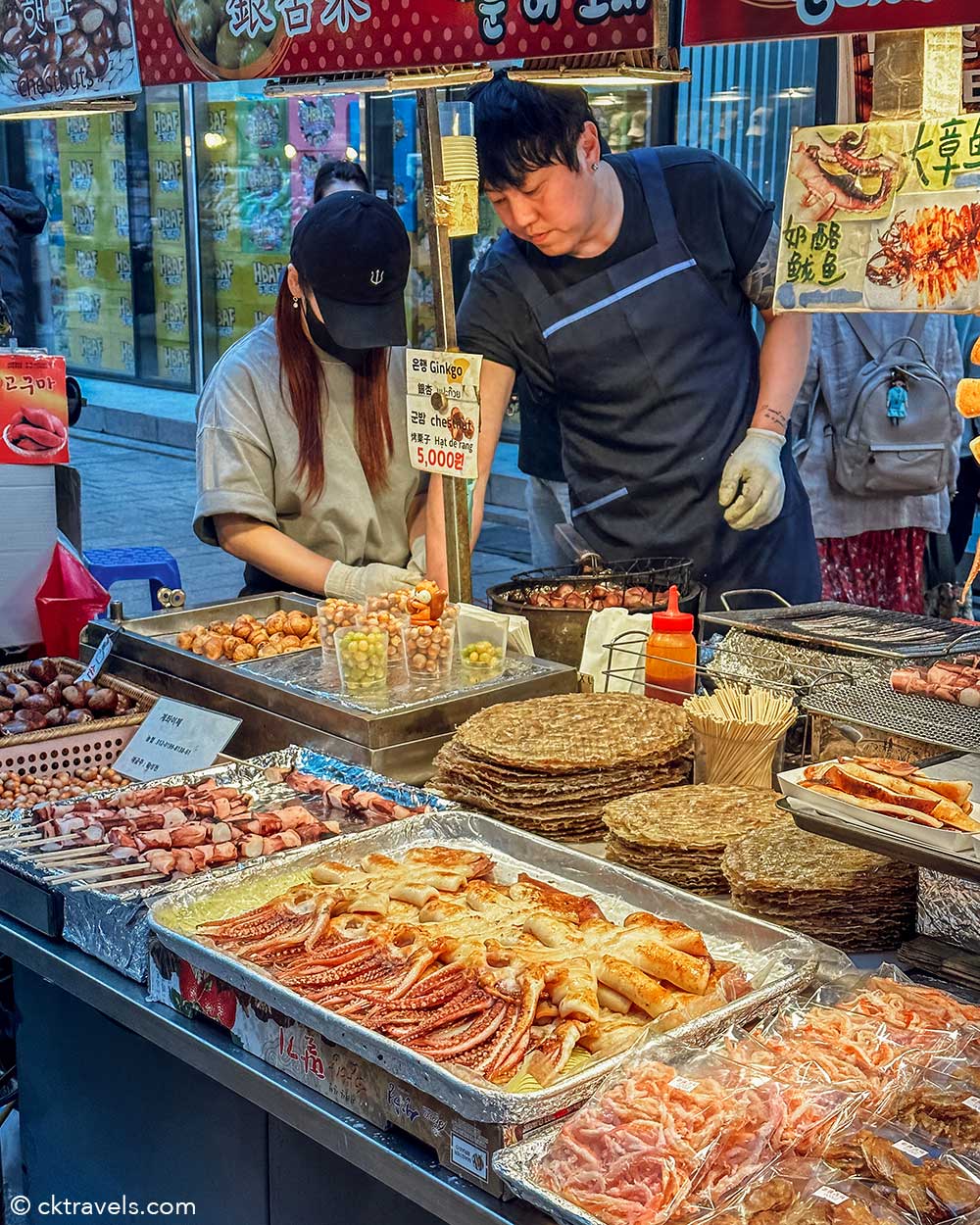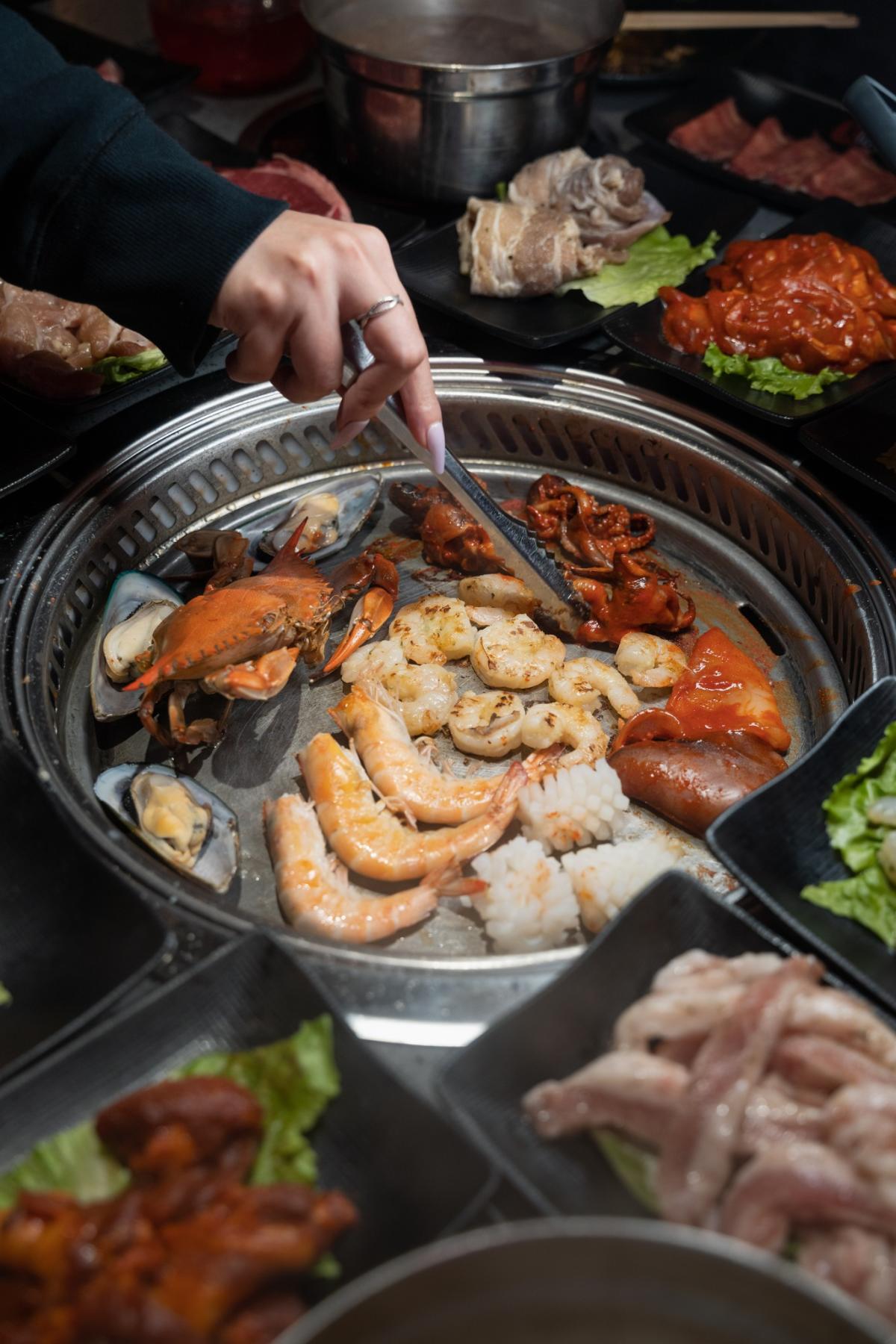
For foreign tourists looking to immerse themselves in the vibrant culinary scene of Korea, KPOT Korean BBQ & Hot Pot is an absolute must-visit. This unique dining experience seamlessly merges traditional Asian Hot Pot with Korean BBQ flavors, set in a modern and lively atmosphere.
The Experience
KPOT offers an all-you-can-eat menu featuring over 50 types of meats, seafood, vegetables, tofu, and noodles. The interactive nature of the meal, where guests cook their food at the table, makes it a social and engaging experience perfect for families, friends, and coworkers[►LINK][►LINK].
Korean BBQ
Korean BBQ has a rich history, dating back centuries. At KPOT, you can grill a variety of meats and vegetables over an open flame at your table, enjoying bold flavors and a communal atmosphere[►LINK].
Hot Pot
Hot Pot is another beloved tradition, where guests gather around a simmering pot of broth to cook and share a variety of ingredients. KPOT provides multiple broth flavors, allowing each guest to customize their meal[►LINK].
Tips for Foreign Tourists
- Language: Be aware that menu translations can sometimes be misleading. The Seoul city government has initiated a campaign to standardize foreign-language names for Korean dishes, which can help navigate menus more accurately[►LINK].
- Regional Specialties: If you have time to explore beyond Seoul, try regional delicacies like Korean fried chicken from Daegu or jajangmyeon from the west of Seoul. These dishes are highly popular among international tourists[►LINK].
- Cultural Immersion: Engage with the local culture by using public transportation like the KTX bullet trains to reach rural areas, where you can enjoy more authentic local delicacies[►LINK].
For a detailed look at KPOT's menu and offerings, you can visit their official website: KPOT Menu.
This dining experience is not just about the food; it's a cultural revolution that brings people together, making it an unforgettable part of your Korean adventure.
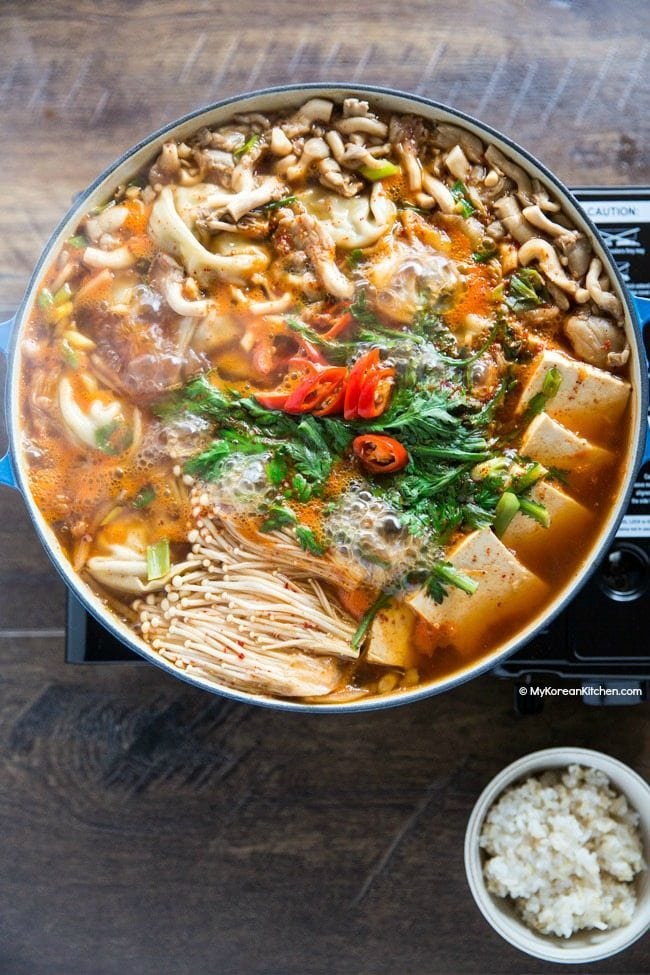
Understanding South Korean Hot Pot (Jeongol) and Korean BBQ
Jeongol: South Korean Hot Pot
Jeongol is a quintessential Korean hot pot that embodies the country's communal dining traditions. Unlike single-ingredient stews (jjigae), jeongol features a variety of ingredients such as sliced beef, seafood, mushrooms, vegetables, and sometimes dumplings (mandu), all simmered together in a flavorful broth[►LINK][►LINK][►LINK].
- Historical Significance: Originally a dish for the upper class and royal court, jeongol is now enjoyed by all. It is cooked in a wide, shallow pot called a jeongolteul and often includes a range of ingredients like beef, seafood, and vegetables.
- Preparation: Ingredients are simmered together at the table, allowing diners to pick out their preferred items. The broth can be spicy or mild, depending on the addition of ingredients like gochujang or chili pepper powder[►LINK][►LINK][►LINK].
Korean BBQ
Korean BBQ is another cornerstone of Korean dining culture, emphasizing communal eating and social interaction.
- Grilling Style: Thinly sliced meats, typically beef (bulgogi) or pork, are grilled at the table on a built-in grill or a portable one. Diners wrap the grilled meat in lettuce leaves with various accompaniments like ssamjang (dipping sauce), garlic, and ginger.
- Side Dishes: Korean BBQ is often served with a variety of side dishes (banchan), including kimchi, pickled vegetables, and steamed rice. This communal style of dining fosters a sense of community and social bonding[►LINK][►LINK].
Communal Dining Traditions
Korean meals are inherently communal, reflecting Confucian values that prioritize relationships and social harmony.
- Sharing Food: Dishes are placed in the center of the table for everyone to share. This includes both jeongol and Korean BBQ, where diners pick from a communal pot or grill.
- Social Etiquette: It is important to take enough food each time to avoid double-dipping and to respect the social hierarchy by serving elders first[►LINK][►LINK].
Tips for Foreign Visitors
- Respect Local Customs: Follow local dining etiquette, such as not eating directly from serving plates and not double-dipping.
- Be Prepared for Variety: Korean meals offer a wide range of flavors and textures, so be open to trying new dishes.
- Engage in Conversation: Korean dining is as much about social interaction as it is about the food, so engage in conversation and enjoy the communal experience.
By understanding and embracing these traditions, you can fully appreciate the rich culinary culture of South Korea.

Comparing Hot Pot Styles: Korean, Chinese, Japanese, and Vietnamese
Chinese Hot Pot
- History and Social Aspect: Chinese hot pot has a history spanning over 1,000 years, often enjoyed for its social and warming qualities. It is a communal meal where raw ingredients are cooked in a simmering broth at the table, fostering a social and cozy atmosphere[►LINK][►LINK][►LINK].
- Regional Varieties: Famous types include Sichuan hot pot, known for its spicy and numbing flavor from Sichuan peppercorns, and Beijing mutton hotpot with a nutritious sheep-bone stock. Other variations include seafood hotpot in Guangdong and sauerkraut hotpot in Northeast China[►LINK][►LINK][►LINK].
- Ingredients and Broths: Common ingredients include thinly sliced meats, vegetables, mushrooms, and tofu. Broths can be spicy or clear, with options like the 'Mandarin ducks pot' for mixed groups[►LINK][►LINK][►LINK].
Korean Hot Pot (Jjigae)
- Spicy and Hearty: Korean hot pot, often referred to as "jjigae," is known for its spicy and savory flavors. It typically includes gochujang (Korean chili paste) and gochugaru (Korean chili flakes)[►LINK].
- Ingredients: Common ingredients are kimchi, tofu, vegetables, and various meats like pork, beef, or seafood. The broth is often made with a base of anchovies, garlic, and ginger.
- Tips for Visitors: Try the kimchi jjigae for a authentic experience, and don’t hesitate to ask for less spicy options if needed.
Japanese Shabu-Shabu
- Light and Delicate: Shabu-shabu is a Japanese hot pot style characterized by its light and delicate broth, often made with dashi (a Japanese cooking stock) and soy sauce.
- Ingredients: Thinly sliced meats (usually beef or pork), vegetables, and tofu are common. The cooking process involves quickly dipping ingredients in the boiling broth.
- Tips for Visitors: Use the provided dipping sauces like ponzu or sesame oil to enhance the flavor. Be mindful of the quick cooking time to avoid overcooking the ingredients[►LINK].
Vietnamese Lau
- Fresh and Aromatic: Vietnamese hot pot, or "lau," is known for its fresh and aromatic flavors. The broth is often made with a combination of beef or chicken stock, lemongrass, and various herbs.
- Ingredients: Common ingredients include thinly sliced beef, pork, seafood, and a variety of vegetables. Rice noodles and dipping sauces like fish sauce and lime juice are also typical.
- Tips for Visitors: Enjoy the interactive dining experience and customize your meal with the various herbs and sauces provided. Be prepared for a lighter, more refreshing broth compared to other styles.
General Tips for Foreign Visitors
- Respect Local Customs: Always use designated chopsticks or scoopers to maintain hygiene.
- Pace Your Meal: Cook ingredients gradually to avoid overcrowding the pot and to ensure everything is cooked evenly.
- Be Adventurous: Try local specialties and unique ingredients to fully experience the culture of each hot pot style.

The All-You-Can-Eat Experience at KPOT Korean BBQ & Hot Pot
For a quintessential Korean dining experience, KPOT Korean BBQ & Hot Pot stands out as a must-visit destination, especially for foreigners looking to immerse themselves in local culinary traditions.
All-You-Can-Eat Delight
KPOT offers an extensive all-you-can-eat menu featuring over 50 types of meats, seafood, vegetables, tofu, and noodles. This allows guests to explore a wide range of flavors and ingredients, making it an excellent value for money[►LINK][►LINK].
Interactive Dining
Korean BBQ at KPOT involves grilling meats and vegetables at the table, a tradition rooted in centuries of Korean cuisine. Hot Pot, another staple, involves cooking a variety of ingredients in a simmering pot of broth, chosen from several flavors. Both options foster a social and interactive dining experience[►LINK].
Etiquette Tips
- Keep the table grease-free by using chopstick holders.
- Ask for wooden chopsticks if metal ones are challenging.
- Do not pile side dishes (banchan) on your plate.
- Order a bowl of rice to help digest the meal.
- Enjoy alcohol, such as soju, but do not take it as shots[►LINK].
Modernized Setting
KPOT combines traditional flavors with a modern, nightlife-like atmosphere, complete with a full bar. This makes it an ideal spot for families, friends, and coworkers looking for a fun and memorable dining experience[►LINK].
Tips for Foreigners
- Be prepared to cook your own food, which is part of the fun.
- Try a variety of broths and meats to fully appreciate the flavors.
- Don’t hesitate to ask staff for assistance or recommendations.
- Enjoy the communal aspect and engage with fellow diners.
KPOT is a cultural revolution in dining, offering a unique blend of traditional Korean BBQ and Hot Pot in a vibrant setting, making it a standout among Seoul restaurants.

Tips and Recommendations for Visiting KPOT Korean BBQ & Hot Pot as a Foreign Tourist
Understanding KPOT
KPOT offers a unique, all-you-can-eat dining experience blending traditional Korean BBQ and Asian Hot Pot with a modern, nightlife-like atmosphere. With over 90 locations, it's a must-visit for any food enthusiast►LINK►LINK.
Korean Restaurant Etiquette
- Respect Elders: Let the eldest person start eating first►LINK►LINK.
- Say ‘Jal-mukkes-seub-nida’: Express gratitude before eating, meaning ‘I will eat well’►LINK►LINK.
- Use Chopsticks and Spoon Correctly: Use chopsticks for dishes and a spoon for rice and soup. Avoid pointing or stabbing with chopsticks►LINK►LINK.
- Share Dishes: Ensure everyone can enjoy shared dishes; avoid hoarding food►LINK►LINK.
- Stay Focused: Engage with your meal and company; avoid using your phone►LINK►LINK.
Must-Try Dishes
- Korean BBQ: Opt for popular meats like bulgogi (marinated beef) and samgyeopsal (pork belly). Grill them at your table for an interactive experience►LINK.
- Hot Pot: Choose from various broth flavors and customize with meats, seafood, vegetables, and noodles►LINK.
Additional Tips
- Arrive Early: Popular locations can be crowded, so arrive early to secure a table.
- Customize Your Meal: Take advantage of the all-you-can-eat menu to try a variety of ingredients and cooking techniques.
- Enjoy the Ambiance: KPOT is not just about food; it's a social and fun experience with a full bar and nightlife atmosphere►LINK►LINK.
By following these tips and respecting Korean dining etiquette, you'll have a memorable and enjoyable experience at KPOT.



